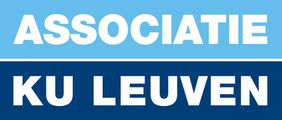Taste, welfare and cultivation of crayfish
Within the first PWO project that focused on the rearing of the European crayfish (Astacus astacus) in recirculation aquaculture systems (RAS), a whole range of rearing parameters were investigated, with emphasis on the juvenile phase of rearing. From the observations from the experiments, the experiences during the first years of the first PWO project, and the discussions in the Steering Committee, new questions are emerging.
An important interim conclusion in the first PWO project was that the success of European crayfish in the (niche) market will largely be determined by the taste of the product. Therefore, this slope is further developed in the present continuation project, using crayfish of consumption size. We consider the influence of feed, growth rate (temperature) and stress on flavor development. This will allow us to identify the extent to which taste can be influenced through these parameters.
Knowledge of the culture of European crayfish of consumption size is limited, mainly due to the longer duration of the experiments. We also want to monitor the entire production cycle in this project, in order to make an informed statement about the economics of the entire cultivation; we are collaborating with an entrepreneur for this purpose. The first project is still ongoing, so the profitability study has not yet been completed in it.

During the experiments of the first PWO project, it was also found that molt (and thus growth) of different individuals can be very asynchronous. This has disadvantages for both zootechnical performance and welfare (cannibalism, mortality, damage). Research on the effect of light and other breeding parameters on molt synchrony and the evaluation of stress during cultivation simultaneously aims at both economic and ethical optimization of cultivation.
Ethology and welfare is one of the basic pillars of the Agro&Bio research core and this theme will be made explicit in the present project. We want the "full story to be right" since the importance of this was clearly shown by the economic part of the first PWO. In that story the technical as well as the "soft" (welfare) aspects are important. This component is woven into the various work packages.
Using the Aqua-ERF lobster breeding system, several parameters can be investigated simultaneously or in parallel. For this purpose, the system can be divided into several parallel, independent systems. By purchasing lobsters of different sizes, we can also conduct experiments with lobsters of consumption size early in the project.
Output of this project
Publications resulting from the project:
- Effect of different light conditions on crayfish welfare, BIAZA Dublin 2015
- Pain perception in crayfish (Astacus astacus): empirical observations and ethical consequences, Eursafe 2015
- Photoperiod affects light/dark preference and exploratory behavior in noble crayfish (Astacus astacus), IAA 2016
- Effect of illuminance and white light spectrum on growth performance in noble crayfish, EAS Edinburgh 2016
- Evaluation of the influence of light conditions on crayfish welfare in intensive aquaculture, EurSafe, 2016
- A low cost set-up to measure underwater spectral irradiance in aquaria, BIAZA 2015



